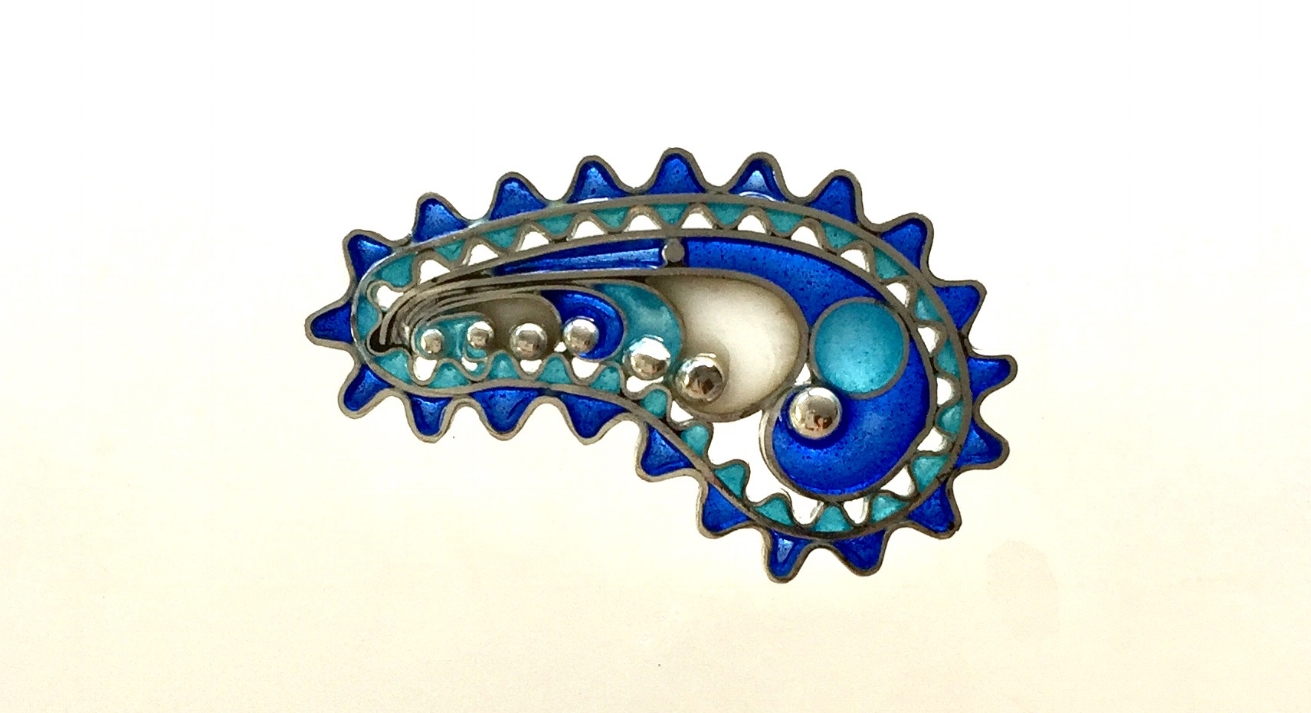All about plique-à-jour enameLing
Welcome to the rare and fascinating world of plique-à-jour enameling. Here, ribbons of precious gold and silver filigree wire are fused with specially formulated glass to create breathtaking vessels, jewelry, and objets d'art, as well as scale miniature stained glass windows, lamps, and panels for use by dollhouse collectors and enthusiasts, as well as in architectural models.
The appearance of plique-à-jour enamels readily brings to mind the skilled craftsmanship of great Art Nouveau jewelers and artists such as Rene Lalique, Louis Comfort Tiffany, and Peter Carl Faberge.
Considered a technical "tour de force" in enameling, this most beautiful and most difficult of enameling techniques - plique-à-jour, (which loosely translates as "light of day") - is sometimes referred to as "backless cloisonné" because of the appearance of the fine silver or gold filigree wire "veins" running through areas of transparent and translucent glass (vitreous) enamel.
What is Enamel?
Enamel = Glass Fused to Metal
Whether you say enamel, smelzan, esmail, smalto, shippo, emaux, emaille, email, or esmalta you're still discussing the same subject - glass fused to metal, the technical definition of enamel!
What is plique-a-jour?
The Dictionary of Enamelling by Erika Speel (ISBN 1-85928-272-5) defines Plique-a-Jour as "Translucent or Opalescent Enamels fused to span across a network of cells formed with gold, silver, silvered copper, or copper, without a backing under the glazed areas. The fused enamel is an integral part of the finished surface, with the glaze forming a shell veined with metal outlines. Plique-a-jour is seen to best effect when lit strongly from the back. Lacking such illumination the enamels tend to look dense or semi-opaque."
She also states "Plique-a-jour has been in fashion since the late 19th century for jewelery and small decorative articles. Although visually very alluring, plique-a-jour pieces are more fragile than other types of enamel work and require careful handling in use. Making these pieces is more time-consuming than other enamel work and there is a potentially higher failure rate." "Therefore the worth of these pieces resides in the inspirational designs and high quality of craftsmanship rather than in the intrinsic value of the metal base."
3 ways it's made
1: Filigree plique-a-jour: This is a building up process whereby a planned design is interpreted using gold or silver wires which are worked over a metal form (i.e. bowl). The wires are soldered together. Enamels are ground and applied to each "cell" created by the metal wirework. The piece is fired in a kiln. This process of placing and firing the enamels is repeated until all cells are completely filled.
2: Pierced plique-a-jour: A sheet of gold or silver is pierced and sawed, cutting out a desired design. This leaves empty spaces or "cells" to fill with enamel powders (ground glass) as described above.
3: Japanese plique-a-jour (Shotai shippo): A layer of flux (clear enamel) is fired over a copper form. Wires are fired onto the flux (similar to cloisonné) and the resulting areas are enameled in the colors of choice. When all the enameling is finished, the copper base is etched away leaving a translucent shell of plique-a-jour.
I have been using the first two techniques described above for my own work - those of filigree and piercing - as they allow a "finished" and clear surface on the fired enamels.


